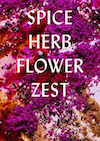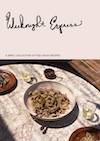A good berry pie is one of those baking skills to conquer first. I love this berry pie for its simplicity, but there are some details to fixate on to make it extra special.
Why I love This Pie:
A great berry pie is classic, and there are two components to get right: the crust, and the filling. The filling for this pie is sweet enough to accent the flavors in good fruit, but not so sweet the fruit is overpowered. I’m encouraging you to make your own homemade pie crust here. It’s a complete game changer, and absolutely doable! A structured, golden, all-butter crust is the ideal contrast to a jammy, unstructured fruit pie filling like this one. I sprinkle the top pie crust with big grains of sugar just before baking to add a layer of crunch and sweetness. A detail that really takes the whole thing over the top.
What Kind of Berries are Best for Berry Pie?
You have latitude when it comes to choosing berries for berry pie. Use whatever great tasting berries you have on hand. It’s okay if they’re not “perfect” as long as the flavor is good. My rare (but absolute favorite) berry pie version is made entirely with wild huckleberries. Raspberries plus huckleberries is a winning combo. And the pie pictured here is a blend of (roughly) equal parts blueberries and blackberries. The formula is to use 2 pounds of berries total. Pick through the berries to remove any stems or molded berries.
Can I Use Frozen Berries?
Yes, you can use fruit that has been frozen in pies. Thaw to room temperature before proceeding with the recipe.
Berry Pie: Pro-tips
Here are a few pro-tips for this pie.
- Glass pie dish: Number one tip, but don’t let this hold you back from baking a pie today. If you love pie, eventually you’re going to want to score a glass pie dish. It allows you to see the base of your pie take on color as it is baking. It’s a helpful confidence builder as you’re dialing in your pie baking skills.
- Work with confidence: People are often intimidate by pie baking. I’m here to tell you that even when it is bad it is good. Just keep moving forward when you’re making a pie. Don’t give up. If you’re fighting the crust, take a minute, put it back in the refrigerator to cool, regroup, then try again.

- Fully Bake Your Pie: An underbaked pie will cause a number of problems including a doughy, unstructured crust, and undeveloped filling. If using a glass baking dish, look for the pie bottom to get golden brown and toasted color. The top should be similar. You can see that I love a deeply golden and rustic crust, and can sometimes push it a bit too far, but you get the idea! Go super toasty and golden, pale flour is no good here.

Berry Pie: Variations
My goal here is to deliver the kind of berry pie recipe that becomes a staple in your baking repertoire – delicious, reliable, and thick with bubbling berry juices. You’ll find the base recipe down below, but here are a few little tweaks I’ve noted in my notebooks over the years.
- Rye Crust: Use this all-butter flaky pie crust, but swap in 25% dark rye flour. You’ll end up with a gorgeous, rustic crust that works brilliantly in combination with berries.
- Lemon Zest Crust: Grate the zest of a lemon or two into your flour and butter as you’re making your pie crust. I don’t always have time for these little touches when making a pie, but love a little wink of lemon to level up just about any pie crust.
- Rose Geranium Sugar: A bit of a wildcard suggestion here, but I happen to have a vigorous rose geranium plant on my patio, and it pairs incredibly well with berries. The night before making your pie filling use your hands to work a few fragrant rose geranium leaves into the sugar. Kind of smash and smear it, seal it in a jar overnight, and remove the leaves before making the filling with the scented sugar the next day.
- Herb & Spice Rye Berry Pie: A version of pie I had on the site for a long time (before this update!) used the rye crust suggested above, and 2 sprigs of thyme leaves plus 1/2 teaspoon cinnamon in the filling.

To Make a Lattice Pie Crust
You don’t have to make a latticed top for this pie, but you can if you like. Here’s how:
Step one: Roll the pie dough top crust out into a 12 x 12 shape and cut into 1-inch thick strips (pictured above). Go for more of a square shape if possible.
Step two: Arrange 6-7 strips horizontally on a piece of parchment paper. Then, starting in the middle, working quickly with a single strip, make your strips look like this. (above) Under two, over two, under two, at 45 degree angle.
Step three: Grab another single strip and do the opposite next door. So – over two, under two, over two. Keep going working outward, alternating. When you’ve used all your strips transfer the crust to the refrigerator for 5 minutes or so to set a bit. You’ll be able to slide it off the parchment paper into place on the pie. Trim just beyond the edge of the pie dish, crimp or seal, and proceed with the recipe.




